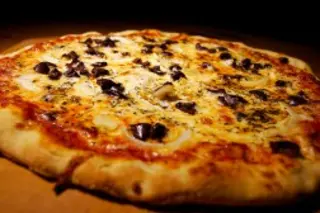Image: flickr/Ryan Hyde
Mmm... Pizza! Although it's a crowd pleaser, when it comes to gourmet pizza, there seem to be as many different preferences as there are people. But no matter how you like your pizza, this study will help you choose the best cheese. To compare different cheeses, this international group of scientists carefully made pizzas that were as uniform as possible except for the type of cheese used: they tested Mozzarella, Cheddar, Colby, Edam, Emmental, Gruyere and Provolone. They then investigated the browning properties of the cheeses (see figure below), as well as their elasticity, oil and water content, and melting properties (be sure to check out their awesome model for how cheese blisters form when baking pizza!). And yes, they made all their pizzas in triplicate! The result? Well, it depends on what you are looking for in your pizza, but there's a reason that Mozzarella is ...














